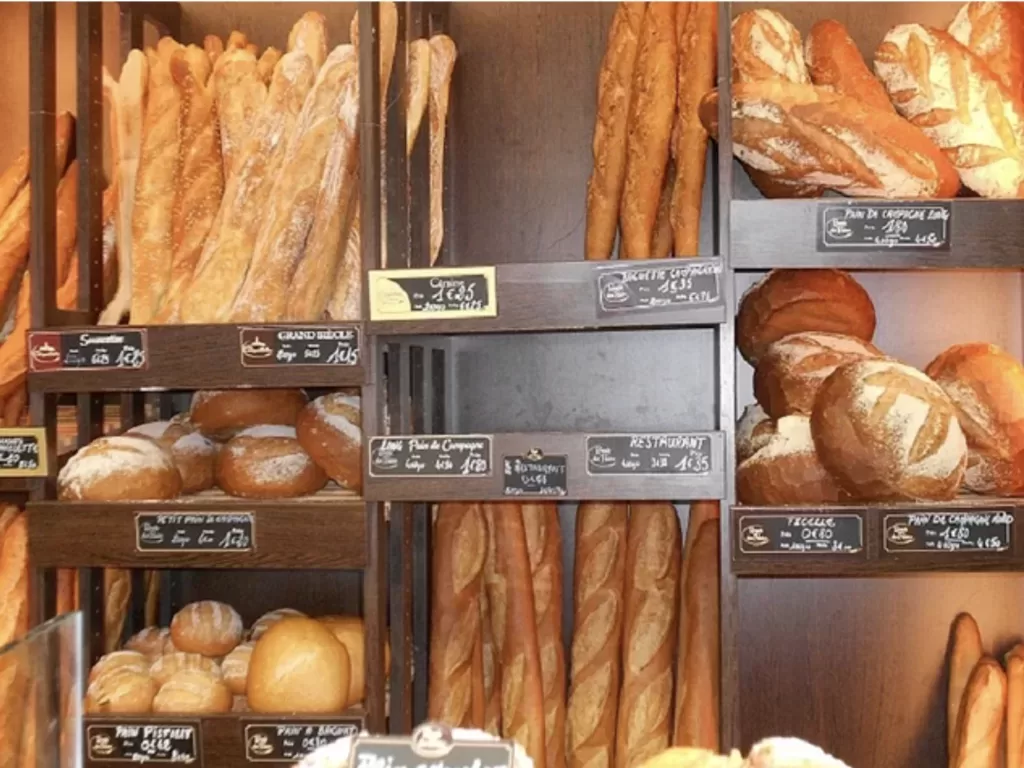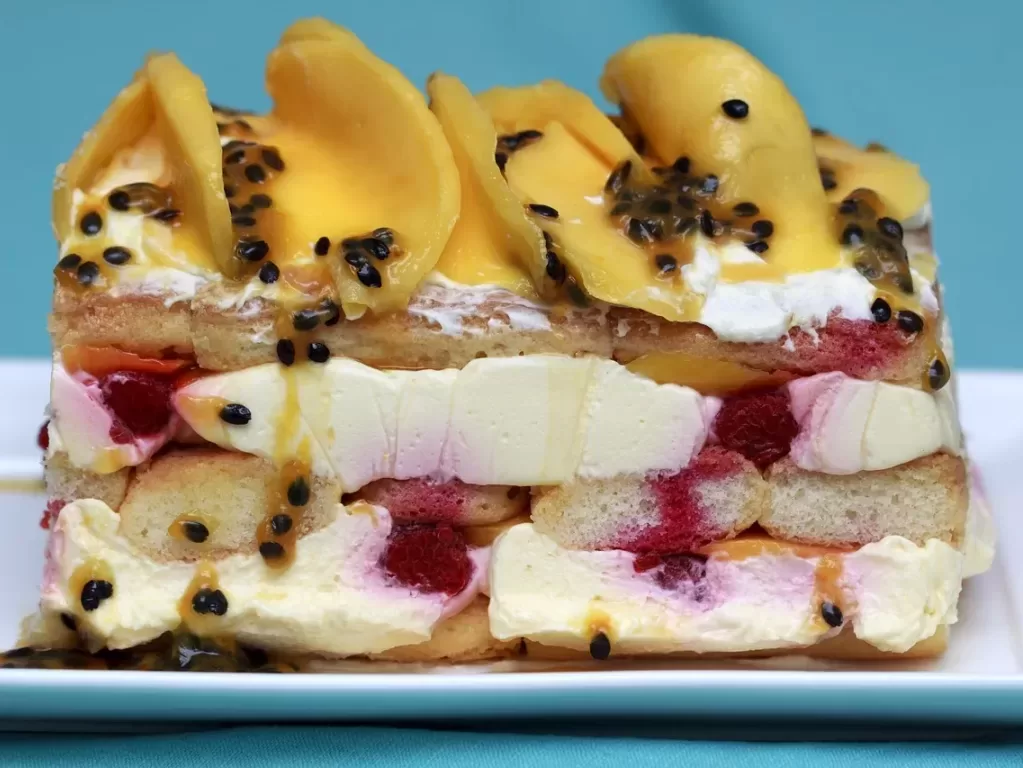Beyond the Baguette: A Guide to French Bread – find the true & the best Boulanger!

When you think of bread in France most people think of la baguette. The long, crusty bread with a chewy inside is so quintessentially French that the World organization, UNESCO, recognizes it as the official bread of France. While I love a good baguette – especially with a little butter – France offers many other types of bread with which people outside of France may not be familiar. So, grab some butter or jam and join me in going beyond the baguette to taste a few of the other bread… here is your ‘Guide to French Bread’.
When ordering a baguette, take care to note that there will actually be several different types of baguette for sale, some of which are tastier than others. The standard baguette is known as ‘baguette ordinaire’ and will be the cheapest, though you can instead opt for the ‘baguette tradition’. Baguette tradition is baked in accordance with a traditional recipe and tends to have a chewier crust and fluffier interior. This baguette tends to be 10-40 centimes more expensive than its cheaper counterpart but is more than worth the extra price tag in my opinion.
But firstly a general word about storing your French bread. The first piece of advice is to consume the bread the day you buy it when it’s at its best, but if you must store it then here is some advice from Epicurious:
It’s just a fact: the best breads die young. Because of its short shelf life, we’ve all wondered how to keep bread fresh at one time or another. While there are many options for storing those beautiful bakery loaves (that, since they contain only flour, yeast, and water, are at risk of becoming stale almost immediately), some of these options are better than others.
In fact, one method is far superior to all others, and that’s the freezer. But if you’re short on freezer space or you just prefer to keep your bread at room temperature, we tested a handful of other bread storage methods and ranked them.”
Now let’s discover French bread beyond the Baguette
1. Ficelle
A Ficelle, meaning “string” in French, looks like a baguette; however, it is about half the thickness of one. It is a yeast bread with a very crusty outside and a soft and fluffy inside. While not common, sometimes the bread is made from sourdough.

2. Pain de Campagne
Pain de Campagne is French bread – sourdough bread. The round loaf is made with a combination of white, wheat, and/or rye flour, water, a leavening agent, and salt. Because of its larger size, this bread is good for feeding a lot of people. The bread itself is dense and heavy and due to its slightly sour taste, is better suited for lunches or dinners. It’s great for making sandwiches.

3. Pain au Son
Pain au Son is a whole-grain bread traditionally made with honey, oat bran, yeast, water, and salt. It’s high in fiber and is considered a healthier choice than other breads. Its texture is similar to Pain de Campagne. Pain au Son is either round or in small loaves that are about the same width as sandwich bread and is best served with soups or stews.

4. Faluche
Faluche, or Faluche du Nord, is a traditional French bread from the Nord-Pas-de-Calais region in northern France. It’s made with white flour, yeast, water, butter, and salt, and is soft and fairly dense. Its round, semi-thick flat shape makes it different from other breads. Faluche is typically eaten for breakfast with butter and jam or as a snack with brie cheese.

5. Fougasse
Fougasse is a regional flatbread from Provence similar to the Italian focaccia but is baked into a leaf-like shape and is much crispier. When baked like this it is usually topped with herbs, olives, and tomatoes. The dough can also be filled and folded over itself to make a French version of the Italian calzone. Fillings can be cheese and bacon, dried fruit, or Roquefort and nuts.

6. Gibassier
Gibassier (pronounced zhee bah zhee) is an orange-flavored bread from Provence. It’s made with the same basic ingredients as other French bread but also has eggs, olive oil, orange juice, butter, and anise seeds in it. Because of its sweetness, it’s best served at breakfast; however, it is traditionally served with Christmas dinner. Gibassier is typically not found outside of France.

Where to Get Your French Bread: finding the ‘true’ Boulanger de France
If you’re in France, the best place to buy bread is a boulangerie. But what is a ‘true‘ boulangerie? How can you recognize one?
A boulangerie is a term used to identify a bakery that has met stringent government requirements qualifying it to use the designation. One of the most important requirements of these requirements is that the bread MUST be made on-site. No part of the bread-making process, from the dough to the baking, can be done outside of the baker’s physical location.
There are many that are nicknamed ‘industrial boulangeries’, where the dough is made industrially and purchased to be only baked in the boulangerie. These are NOT ‘true’ boulangeries. The French National Association of Bakers and Pastry Makers has been concerned about the rise of industrial products and the decline of traditional baking techniques. In 2021 they launched a program to identify and promote ‘true’ artisan bakers. Anyone who qualifies can display a new logo and benefit from a nationwide publicity program.
True artisanal French breads and pastries do taste better, but how can you find them? The good news is that this label will make it easy. It’s called Boulanger de France. Only buy your bread in France where you see this label.
Finding the Best Boulangerie
However, finding the best boulangerie is subjective. You can ask around for recommendations or do your own research and sample the ones in your neighborhood. Or you can check the Best Baguette annual competition – if they win an award for the best baguette, odds are that that’s where you’ll find the best French bread of all sorts.
Here is how to find the best bread in Paris. There is a competition known as the “Grand Prix de la Baguette de Traditional Francaise de la Ville De Paris”. Every year a winner is chosen by a panel of judges using a complex scoring system to award the title of the best baguette in Paris for that year. Here you can find the list of the top ten Boulangers in Paris and where to find them.
If you’re outside of France like me, finding an authentic French bakery may be more challenging. If you live near a larger city you have more options. Just type “French bakeries in (your city name)” in your favorite search engine, et voila! If French bakeries are not in your area you could always be adventurous and make your own bread. Another internet search will give you many options, including online or remote learning. La Cuisine Paris cooking school offers French Bread Basics video classes in English. Learn how to make French bread from the comfort of your own kitchen.
This ‘Guide to French Bread’ describes only some of the many other wonderful breads France has to offer. I encourage you to eat more widely in terms of bread and serve something other than a baguette.
Which is your favourite French Bread? Share with us in the comments section below.
* Products that must be fait maison (made in-house): croissant, pain au chocolat, pain aux raisins, brioche, pain au lait, galette de rois, éclair, religieuse, mille-feuille, Paris-Brest, opéra, tartes aux fruits, flan, chausson aux pommes, quiche, pizza, sandwich.
Image credits:
1. A variety of bread at ‘Jamais & Fils Boulanger’ via MyFrenchLife.org
2. Ficelle loaf via commons.wikimedia.org
3. Pain de Campagne loaf via commons.wikimedia.org
4. Pain au Son by Eric Fung via Flickr
5. Faluche bread via commons.wikimedia.org
6. Fougasse bread via commons.wikimedia.org
7. Gibassier bread by Sangee Vijay via Pinterest
8 – 10. Copyright © Boulanger de France
Your subscription to the (free or paid) ‘le Bulletin’ will be gratefully received, and will help me continue to build ‘le Bulletin’ - the weekly newsletter of MyFrenchLife.org Magazine to be even more rich. Merci Mille Fois






